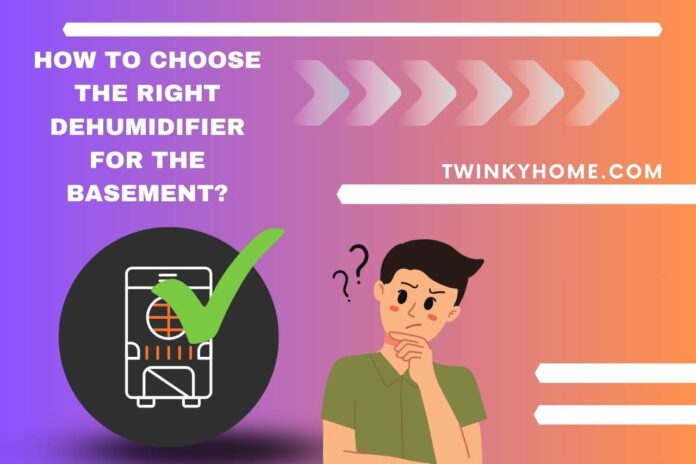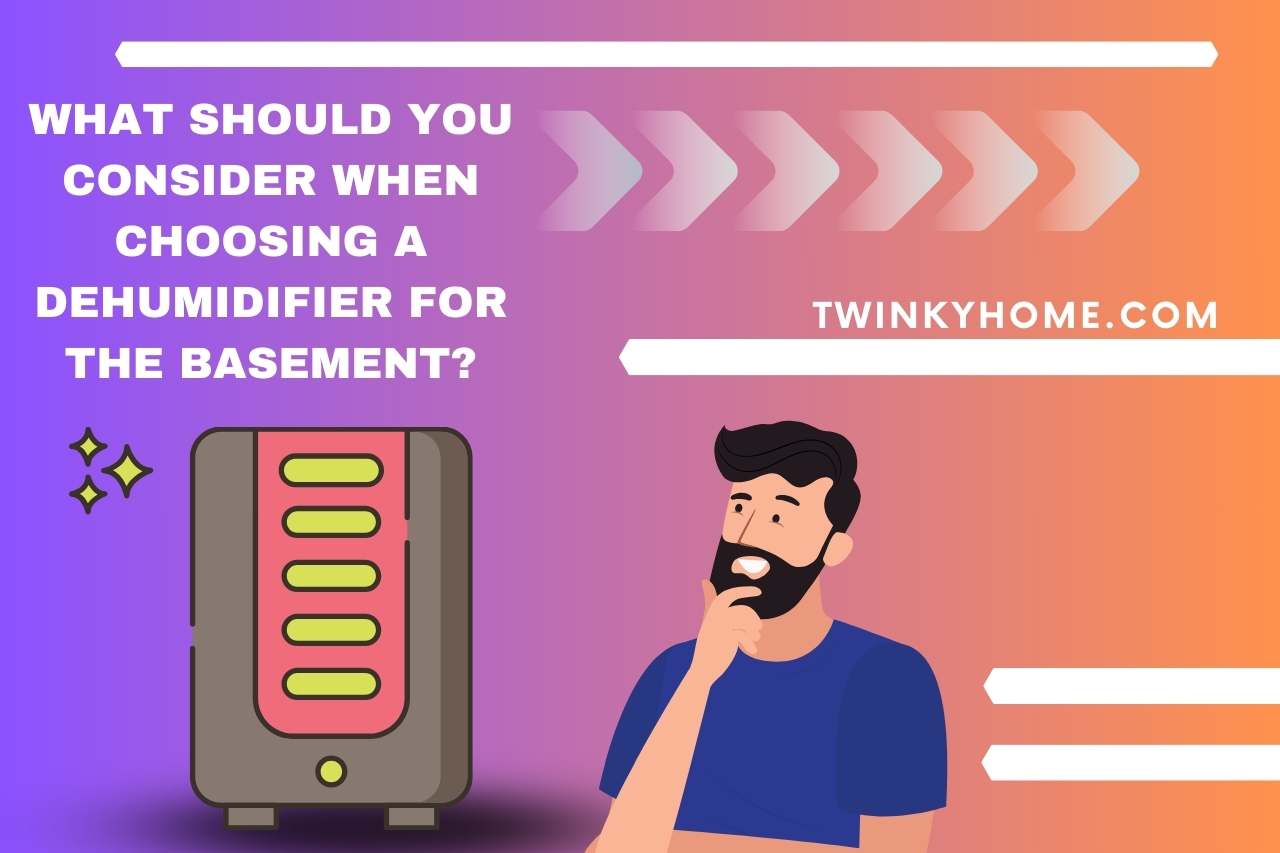Unlock the secrets to a dry and comfortable basement with our comprehensive guide on ‘how to choose the right dehumidifier for the basement.’ Yes, excess moisture in your basement can be bothersome, so finding the right dehumidifier is crucial for maintaining a healthy environment and preventing issues like mold and musty odors. In this comprehensive guide, we’ll walk you through the essential factors to consider, from calculating basement size to assessing humidity levels. You will also discover the ideal dehumidifier capacity, drainage options, and energy-efficient features that align with your basement’s unique needs. Whether you’re dealing with a compact or expansive basement, our guide will empower you to make an informed decision and transform your space into a dry, comfortable haven. So, say goodbye to dampness and hello to a basement that’s optimized for both health and comfort!
What is the Purpose of a Basement Dehumidifier?
The main purpose of a basement dehumidifier is to combat excess moisture in your home’s lower level. By effectively regulating humidity levels, it serves as a proactive defense against common issues like mold, mildew, and musty odors.
The dehumidifier works by extracting moisture from the air, preventing the formation of harmful contaminants, and protecting belongings stored in the basement.
This essential appliance not only contributes to a healthier indoor environment by improving air quality but also safeguards the structural integrity of your home.
Accordingly, the dehumidifier creates an optimal balance in moisture, enhancing overall comfort and preserving the condition of your basement and its contents.
How to Choose the Right Dehumidifier for the Basement?
In order to choose the right dehumidifier for your basement, first, you have to calculate the basement size. We have described the entire procedure clearly till the last step so you will make the best decision when choosing your dehumidifier.
- Calculate the Basement Size: First, measure the square footage of your basement to determine the appropriate capacity. Dehumidifiers are rated by pint removal capacity per day, typically ranging from 30 to 70 pints.
- Consider Humidity Levels: Assess the current humidity levels in your basement. If it’s excessively humid, choose a higher-capacity dehumidifier for more effective moisture removal.
- Check Drainage Options: Decide between manual drainage or continuous drainage. Some dehumidifiers come with built-in pumps for easy water removal. Analyze the layout of your basement when considering the drainage option.
- Energy Efficiency: Look for Energy Star-rated models to ensure energy efficiency and cost savings in the long run.
- Noise Level: Consider noise levels, especially if the basement is used as a living space. Choose a dehumidifier with lower decibel ratings for quieter operation.
- Auto-Defrost Feature: Ensure the dehumidifier has an auto-defrost feature since it helps prevent the coil from freezing in colder temperatures.
- Portability and Placement: Opt for a portable unit with caster wheels for easy movement. Consider the placement of the dehumidifier for optimal coverage.
- Brand and Reviews: Research reputable brands and read customer reviews to gauge the reliability and performance of potential models.
- Warranty and Support: Check the warranty period and available customer support to safeguard your investment.
What Size Dehumidifier Do I Need for the Basement?
To determine the appropriate dehumidifier size you need for your basement, consider both the square footage and moisture levels of the area. In general, we can categorize dehumidifiers according to their capacity. So, make your decision based on the number of square feet and the dehumidifier’s capacity as follows:
- For spaces under 600 square feet with slight dampness, a small-capacity dehumidifier is suitable.
- Areas ranging from 600 to 800 square feet, experiencing slight dampness or a musty smell, may require a medium-capacity dehumidifier.
- Larger areas exceeding 1,200 square feet with slight dampness or noticeable condensation benefit from a large-capacity dehumidifier.
You are advised to use a hygrometer to accurately assess the humidity level and determine the appropriate dehumidifier capacity. Moreover, consider additional factors like climate, occupancy, windows/doors, and the presence of appliances, which can influence the unit size.
For highly damp basements, adjust the pint capacity accordingly. For instance, areas under 500 square feet may need a small dehumidifier with a 12-pint capacity, with an additional 5 pints for every extra 500 square feet.
And it’s essential to address external moisture sources for effective dehumidification. Unclogging gutters and redirecting rainwater away from the foundation are crucial steps to complement the dehumidifier’s performance.
What Should you Consider When Choosing a Dehumidifier for the Basement?
When selecting a dehumidifier for your basement, there are certain aspects to consider. Here, we have condensed those factors for your reference.
- Space Size and Moisture Levels: Align the basement’s square footage with its humidity conditions. Larger areas may require a dehumidifier with higher capacity. Utilize a hygrometer to gauge humidity levels accurately.
- Dehumidifier Capacity: Maintain indoor relative humidity between 30-60%, as recommended by the Environmental Protection Agency, to prevent mold. You are advised to choose a dehumidifier with a capacity matching the square footage; for instance, a 500-square-foot space may need a 10-pint capacity, while a 1,500-square-foot area may require an 18-pint capacity.
- Effective Drainage: Ensure the dehumidifier efficiently drains collected water. Models with built-in pumps offer convenient drainage options into floor drains or utility sinks through connected hoses.
- Automatic Humidistat: Opt for a dehumidifier with an automatic humidistat, regulating on/off cycles to maintain the desired humidity level and enhance energy efficiency.
- Air Filter: Some dehumidifiers feature air filters that trap allergens and particles, reducing allergy symptoms and safeguarding unit components from dust and debris damage.
- Energy Efficiency: Last but not least, prioritize dehumidifiers with an Energy Star rating for energy savings and reduced utility costs.
You May Also Like
- How to Drain a Basement Dehumidifier? Step-by-Step Guide
- How Long for Dehumidifier to Dry Basement? Unveiling the Drying Magic!
- How to Clean Basement Dehumidifier? Crystal Clear Air!
- How to Keep the Basement Dry Without a Dehumidifier? (Tips & Tricks)
- Does Dehumidifier in Basement Help Upstairs? The Ripple Effect!
- Whole House Dehumidifier vs Basement Dehumidifier – Choosing Wisely!
- Why does My Basement Dehumidifier Ice Up? Decoding Dehumidifier Woes!
- Can you Run Two Dehumidifiers in the Basement? (Ins and Outs)
- How Long Should a Basement Dehumidifier Last? Investing in Comfort!








![OGX Biotin And Collagen Shampoo Review [Updated One] Ogx Biotin And Collagen Shampoo Review](https://twinkyhome.com/wp-content/uploads/2022/03/Are-chicken-Super-Noodles-vegetarian-1-100x70.jpg)